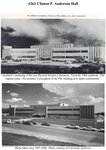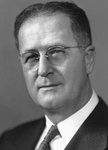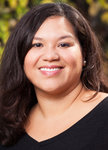Wind: 5.8 mph, W
Welcome to our new web site!
To give our readers a chance to experience all that our new website has to offer, we have made all content freely avaiable, through October 1, 2018.
During this time, print and digital subscribers will not need to log in to view our stories or e-editions.





This year is New Mexico State University’s Physical Science Laboratory’s (PSL) diamond jubilee, or 75th anniversary, a major milestone for what NMSU Chief of Staff Leslie Cervantes calls one of southern New Mexico’s “hidden gems.”
“Lots of people don’t know what PSL is or what we do,” said Marcella Shelby, Ph.D., who is PSL’s strategic initiatives officer.
PSL was set up in 1946 to support U.S. military telemetry and missile systems, said Director Eric L. Sanchez. Now 75 years later, PSL works with the U.S. Department of Defense, NASA, the Federal Aviation Administration, Los Alamos National Laboratory and many others on a wide range of programs and projects across the country and around the world. About 40 percent of the work PSL does is classified, Sanchez said.
Housed in Clinton P. Anderson Hall, 1050 Stewart St., PSL covers 7 acres on NMSU’s Las Cruces campus.
Sanchez, a retired U.S. Army brigadier general and former commander of White Sands Missile Range, is a 1987 distinguished military graduate of NMSU with a degree in education. He became PSL director in June 2020 after 32 years of active-duty military service, including deployments in the Middle East and the Republic of Korea, NMSU said.
Today, PSL’s “domain expertise” continues to include work on telemetry and missile systems, along with electronic warfare, counter measures to detect, avoid or distract an enemy’s weapons systems or tactics, unmanned aerial systems, scientific ballooning (including a program to help bring broadband to the Navajo Nation) and custom flight hardware.
PSL is also a business and economic development asset, Sanchez said, and provides educational and work opportunities for students.
Like many organizations, PSL was slowed by the pandemic, Sanchez said. But by mid-July, the facility was “matching what we did prior to Covid,” he said.
“Over the last 10 years, PSL has brought in contracts and made research expenditures at an average of $37 million annually,” Shelby said.
There are plans for major growth at PSL during the next five years, including doubling its program size, Sanchez said. That will mean substantial investments in information technology and infrastructure, he said, and a step-up in PSL’s participation as a regional leader in economic development and its support for student learning and workforce readiness.
PLS launched the Classified Ready Employee Workforce (CREW) program in 2020 to foster the next generation of the national security workforce, Sanchez said. The two-year co-op program helps students learn about national security and earn clearance to classified systems that makes them “very, very marketable” to potential employers, he said.
CREW students have often been hired before they graduate by companies like General Dynamics and Northrup Grumman and “are now leaders in the field,” said Shelby, who earned a doctorate in economic development from NMSU in 2015. After graduation, she worked for the New Mexico Economic Development Loan Fund and later moved to California. Shelby returned to NMSU to work for PSL in August 2020.
CREW has attracted national attention from leaders at Spaceport America, the Massachusetts Institute of Technology and others, Sanchez and Shelby said.
“It needs to be a national program,” Sanchez said.
PSL currently has about 150 employees, including engineers, scientists and support staff, with that number expected to rise to 200 by the end of 2022, Shelby said. The lab employs an average of 25 students and 10 co-op students each semester.
“Since 1946, we have had nearly 20,000 students come through our doors as student employees and co-ops,” Shelby said.
PSL has an “excited and dedicated workforce,” Sanchez said. “Everybody’s giving 100 percent every day.”
As PSL obtains additional grants and contracts, there are “lots of ideas and lots of opportunities for innovation,” Shelby said.
“For NMSU to be successful, PSL needs to be successful,” Sanchez said.
“PSL has such a rich history of working on issues of national importance,” said NMSU Chancellor Dan Arvizu. “When I was a student in the 1970s, PSL was a vibrant place doing great work, especially with satellite tracking around the world. At that time, they had hundreds of co-op students, including many of my friends. PSL is a great asset to the country, to our state and to NMSU.”
Clinton P. Anderson Hall
The building that houses PSL was built in 1965 and dedicated that Oct. 23 of that year, the 70th birthday of U.S. Sen. Clinton Presba Anderson, D-N.M.
Anderson (1895-1975) was a U.S. senator from 1949 to 1973 and served as a member of the U.S. House of Representatives from New Mexico, was U.S. secretary of Agriculture during the Truman Administration (1945-48) and was New Mexico’s ninth state treasurer (1933-34).
More than 800 people attended the dedication, which included a birthday cake for Anderson. Baked by the NMSU food service bakery, it was the largest cake ever baked in the state, including more than 100 pounds of icing, according to the NMSU archives. Anderson was chair of the U.S. Senate Committee on Aeronautical and Space Sciences, 1963-73, and was a strong supporter of the U.S. Space Program.
Visit psl.nmsu.edu.
Other items that may interest you
